The Neurophototherapy project uses collage and photography to support and empower neurodivergent creatives to unmask and explore their identity. The project was devised and led by Sonia Boué. Masking describes a complex form of social ‘camouflaging’ that many neurodivergent individuals instinctively adopt to avoid the harms of stigma, bullying and discrimination. As a survival mechanism it can help neurodivergent individuals get through certain situations, but in the long term it can be harmful. This is because masking is exhausting; it is hard to sustain and can cause anxiety leading to burnout and a losing one’s sense of self.
Sonia explains: “Neurophototherapy is a love letter to late neurodivergent discovery or diagnosis, which can be a significant life event and a cause for celebration. It’s also challenging because there’s no road map and often little support. It takes time to peel-off layers of neurotypical social conditioning to be able to claim our birthright - to live authentically and unapologetically as neurodivergent.”
Below, we’re sharing work produced by participants of the Neurophototherapy project. You can find out more about the Neurophototherapy project and method, and download the free publication resulting from the project here.

Unmasked Daydream, analogue collage, 2023
This was the beginning of my journey with Neurophototherapy in which I thoroughly enjoyed looking through the ephemera that evoked so many memories, and also being taken through the videos of collage processes, resources and inspirations that had been created by Sonia and Miranda for the project.

There's No Better Way to Fly, digital collage, 2023
The Rime of the Ancient Mariner by Samuel Taylor Coleridge, a poem I first heard in primary school, has resonated throughout my life. In secondary school, the albatross in the poem became a metaphor for a life I felt I would never have, that included friends and being able to speak in school.
As an adult, a powerful and significant dream about being with an albatross engendered feelings of safety, belonging and joy on a level I’d never felt before. I experienced this in real life after my diagnosis, discovering the ND community on Twitter, and now as a Neurophototherapy project participant.
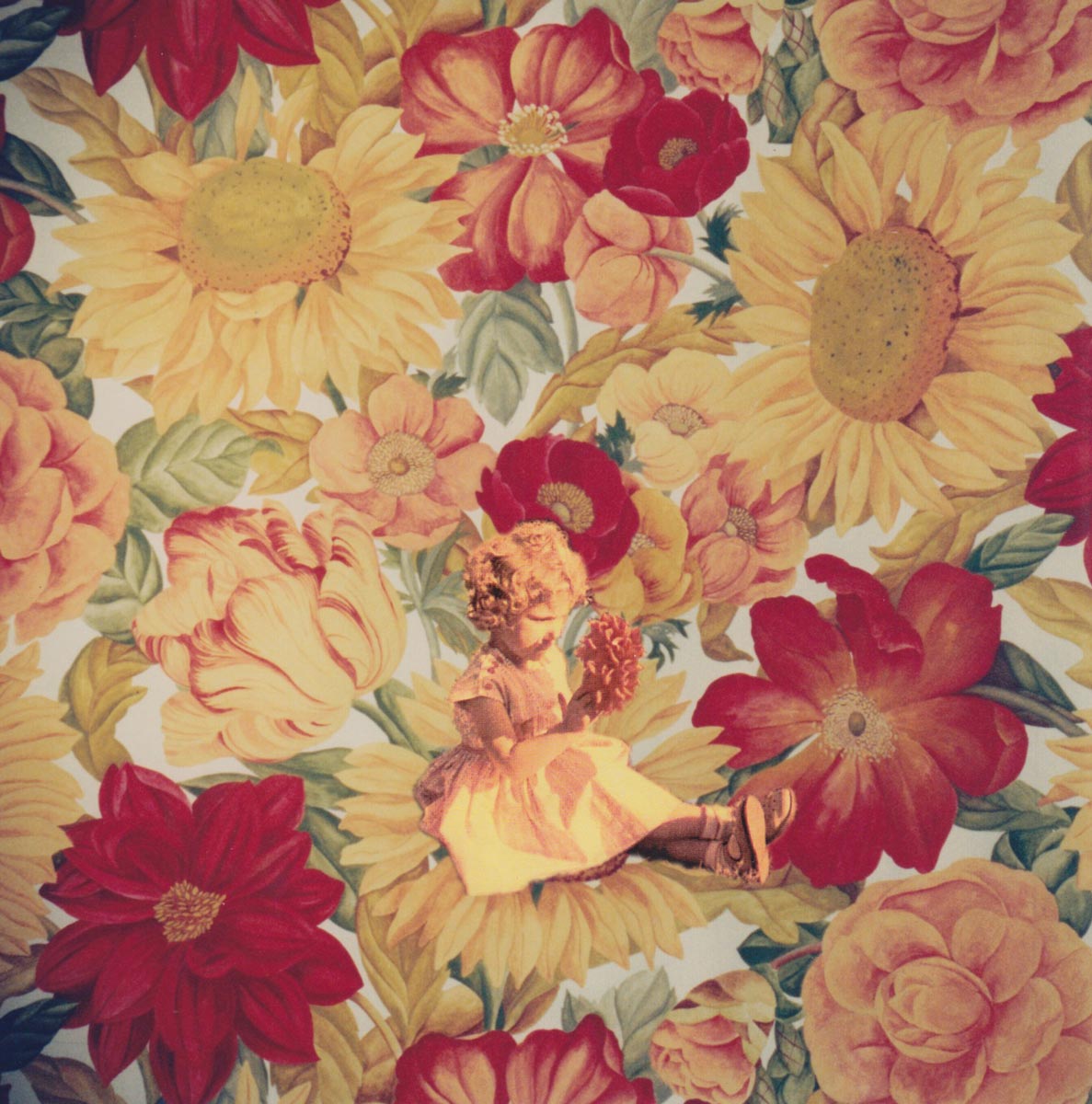
Digital collage, 2023
I responded to Neurophototherapy by immersing myself in two kinds of image sources - my childhood photos and my work as a designer then artist — reflecting the various forms of ‘artist’ I have been from childhood to adult.
I always had a project on the go, as far back as I can remember, I was always making things at home, this got me through difficult times at school. School and the workplace were responsible for my anxiety (and terror at times).
Neurophototherapy has given me permission to spend time with my photographs and art work, this has been amazing — realising there were happy times recorded in the photos that I hadn’t remembered. The project has enabled me to uncover the threads and find good memories and a connection with my artist self from childhood.
This digital collage combines a photograph of me as a child intently looking at a flower with one of my furnishing fabric designs in the background. The process has given me a sense and a perspective on the person that I am, and of my own agency that I hope I can hold onto.
Helen Robson is a working textile artist and has been involved in running creative workshops. She is a great believer in art's ability to help people open up and express what's going on internally. Helen works with the Greater Manchester Autism Consortium and is an Executive Director of Autism UK.
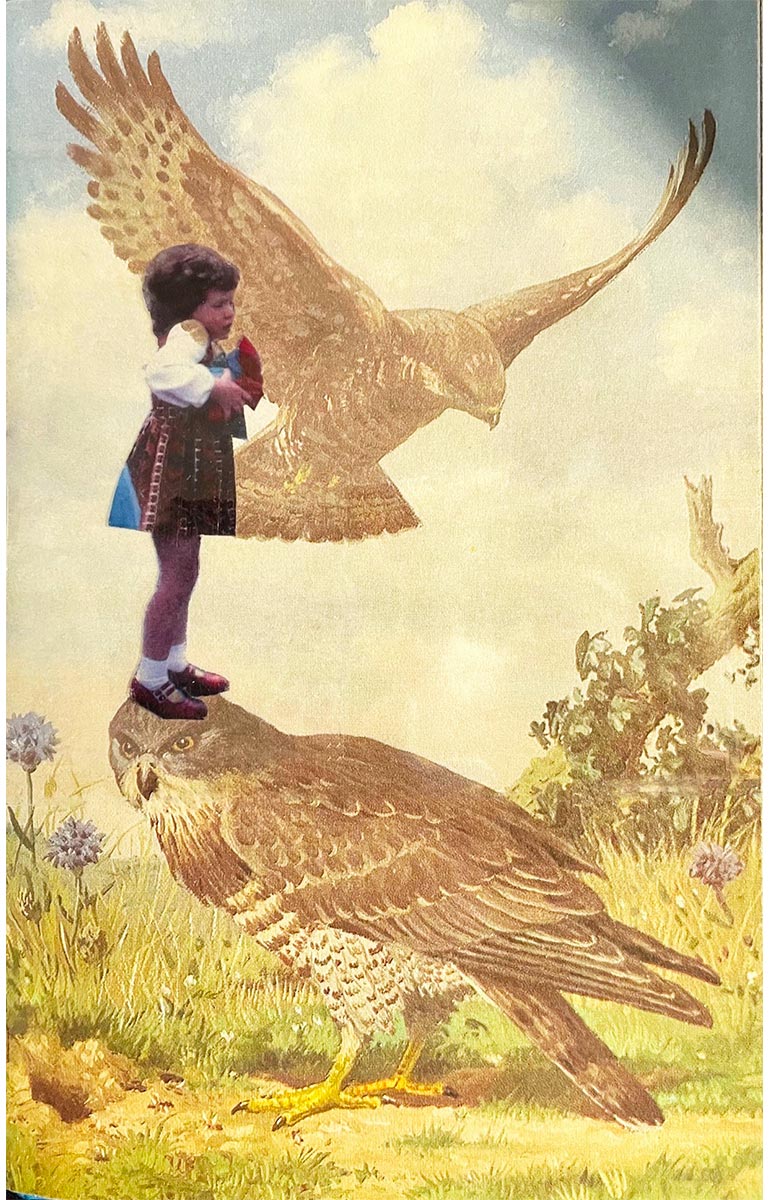
Analogue collage, 2023
Neurophototherapy enabled me to work accessibly and I began to understand my own art practice more. The lightness of the Neurophototherapy method is really helpful in accepting where I am and getting a lot out of a little, by gathering and reflecting. It felt like making a rock pool where the rest of the sea has gone and I felt quite protective of that space.
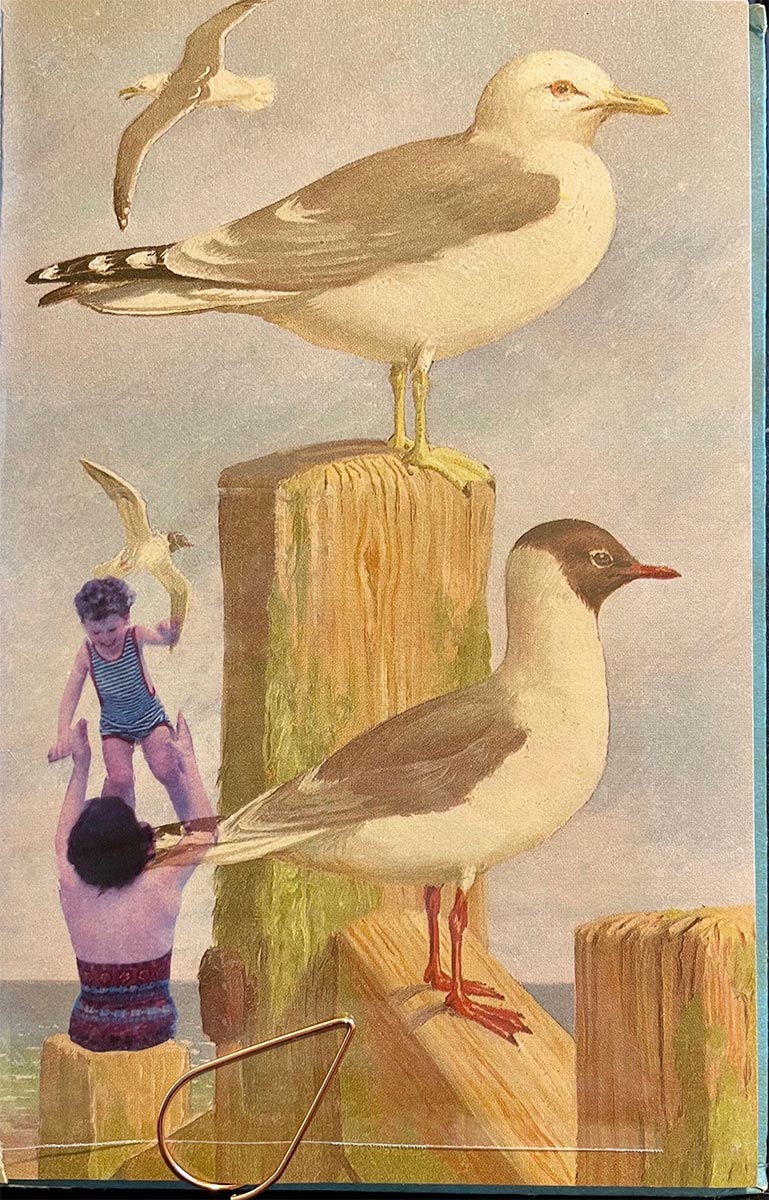
Analogue collage, 2023
I had to work through a lot of physical pain due to an injury. Using tape transfers and not sticking things down enabled me to generate a lot of images very quickly! I really enjoyed revisiting images of myself as a child. I felt like I was getting my memories back and recognising myself - my excited self! I’, much more comfortable in myself, I feel more confident to resist. I feel like this work is a form of resistance because it is really pleasurable.
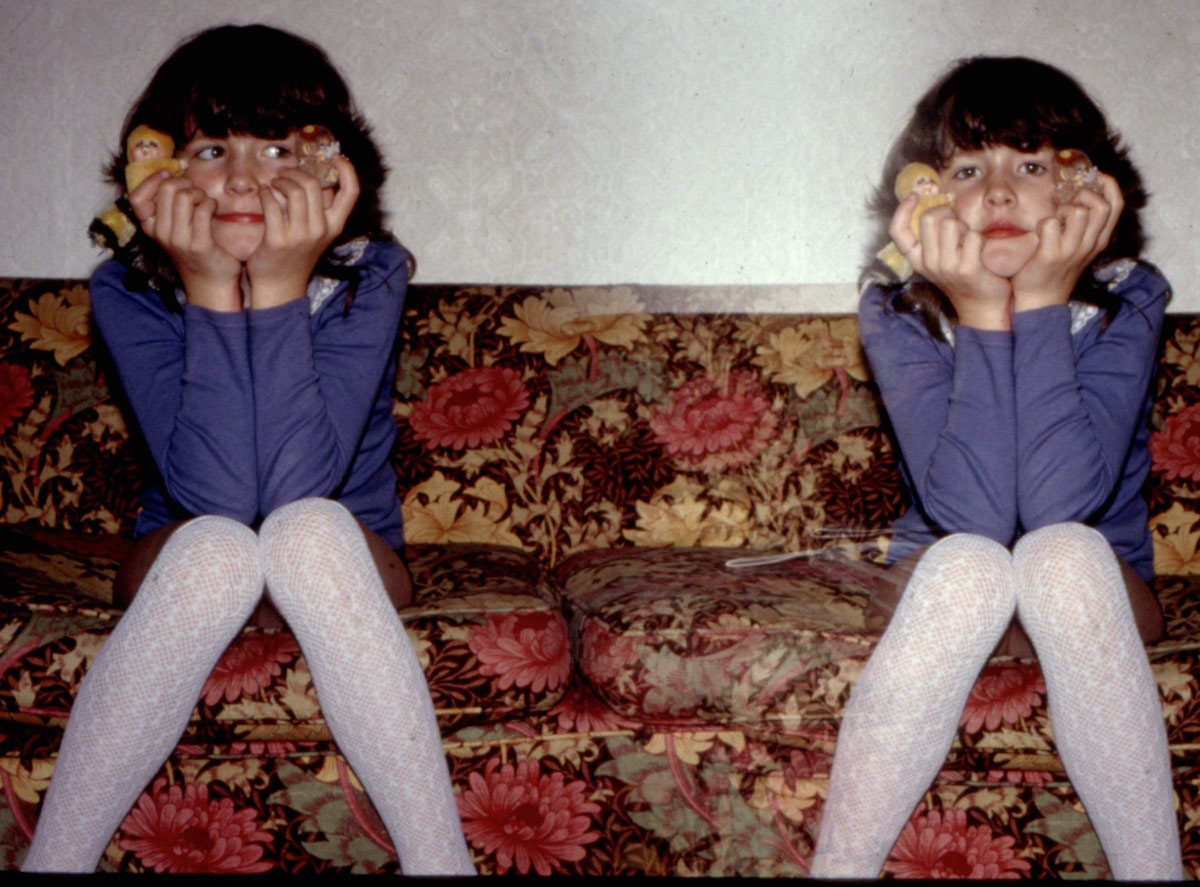
Photo credit: James Barker, DATE
When I was a child, my Dad was really into photography. I think my love of photography has come partly from him. This picture was made by taking a photograph with half the lens covered and winding the camera on while holding the film in place. I switched seats, the lens cover was flipped, and the second photograph was taken in the other half of the frame.
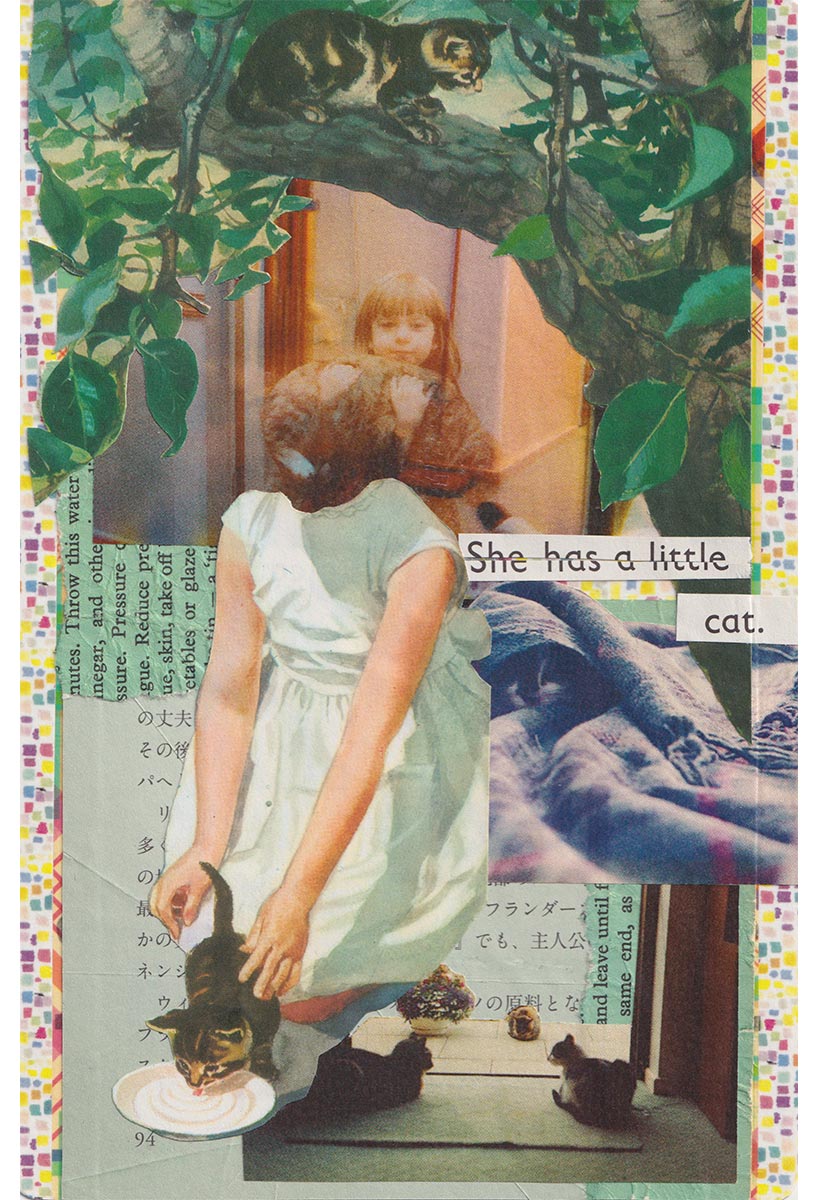
She has a little cat, analogue collage, 2023
Part of my process involved challenging myself to be more playful and less precious about my work. The vintage Ladybird books were provided as source material for participating in the neurophototherapy project, and I was pleasantly surprised to find images that resonated and had an affinity with core childhood experiences.

Let us draw, analogue collage, 2023
Neurophototherapy helped me get back into my artistic practice after a significant period of time away from making. Having access to a studio provided me with the physical and psychological space to reconnect with my creative self. Setting aside dedicated time and space to fall into a state of creative flow was invigorating, and brought me back to the joy of making art as a child.
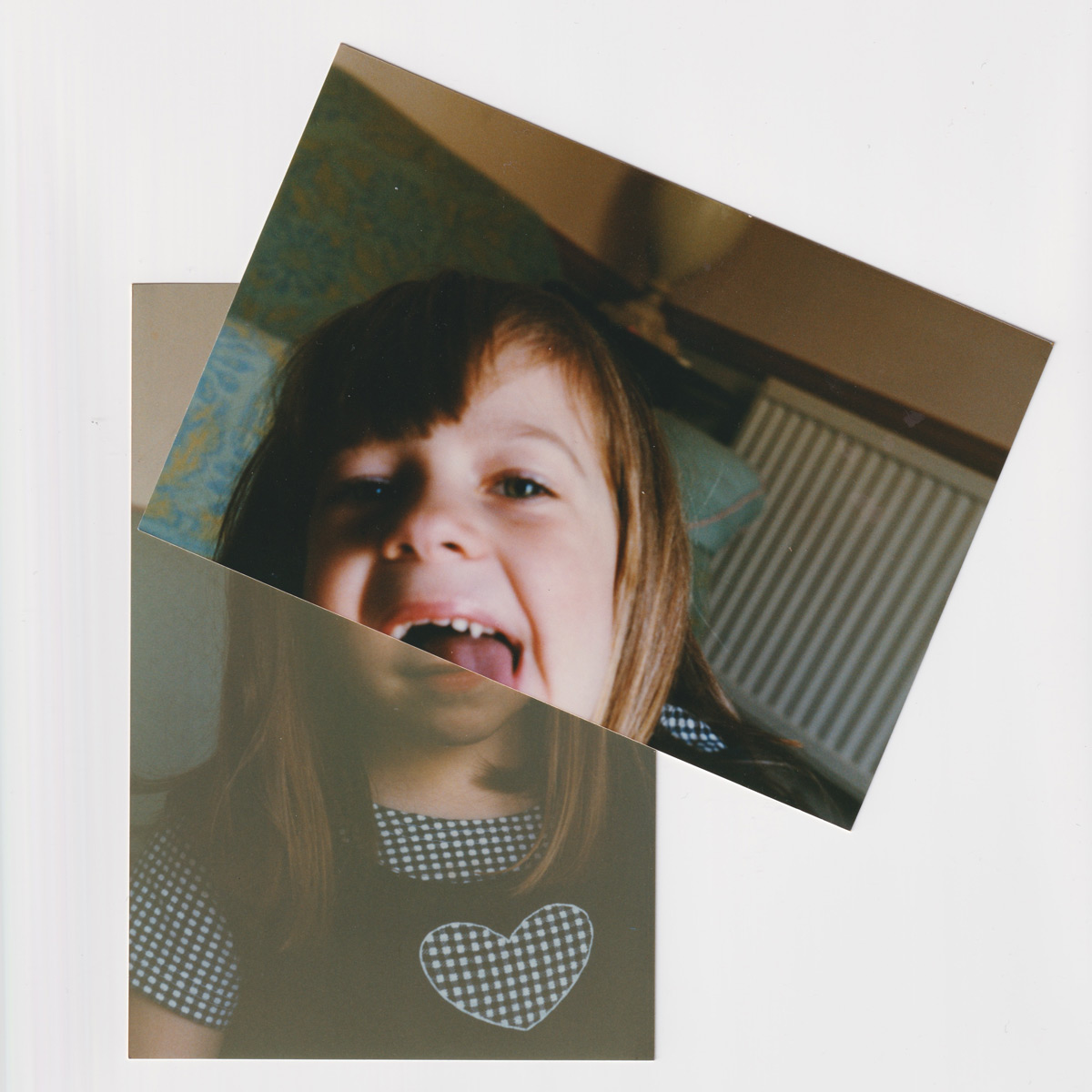
un/mask, self-portrait, 2023
Going through boxes of childhood photographs highlighted where the self-censoring behaviours began to creep in. The authentic, free child lived in the earlier photographs and became hidden behind a false self as time went on. My neurophototherapy process involved working with those earlier images and memories of the free child.
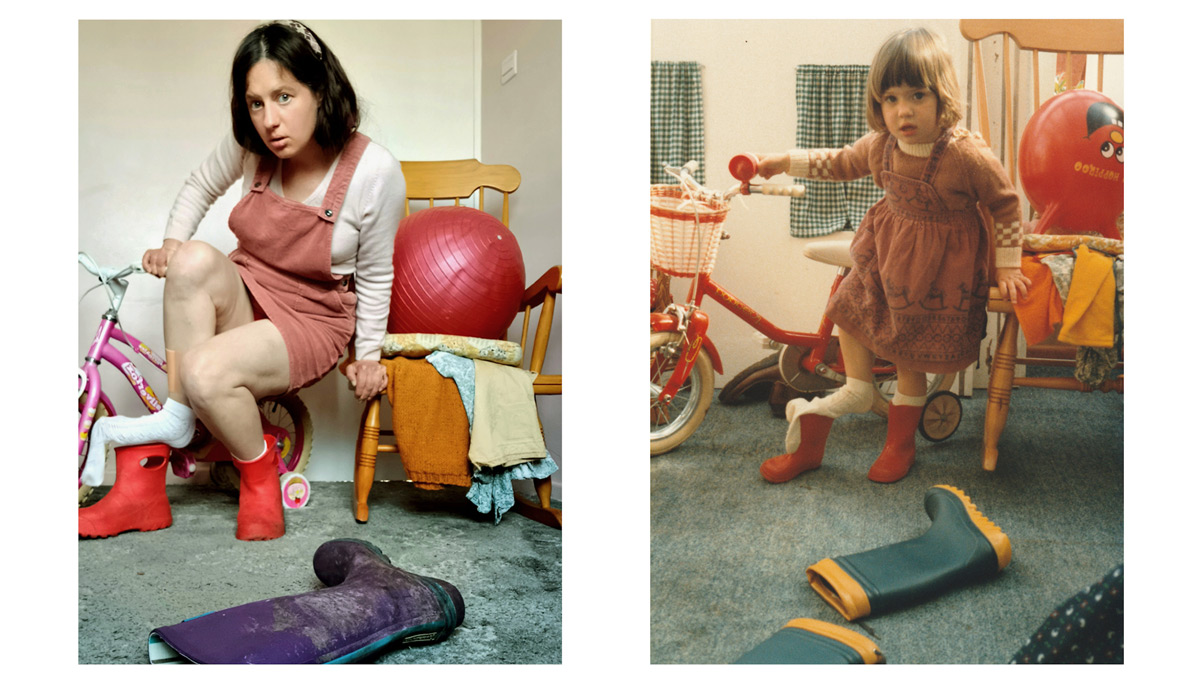
Photo re-enactment, photograph, 2023
In re-enacting a photo of my younger self I was remembering, in my body, the sock/welly boot battle. That annoying situation, which still frustrates me today, when the sock disappears down the boot and is uncomfortable and has to be retrieved by balancing on one foot. It was really tricky to get it right but the process was hilarious. Thanks Mum and Dad for your help.
In this short 360 degree video I meet my younger self in the woods. Through looking at childhood family photographs and playing with collage I liked the idea of playing with shapes in a 3D space. I grew up hiding my true nature and not feeling like a complete person. Maybe I did this because I felt I had to fit in and that I wasn't socially accepted if I didn't fall in line or measure up to what others expected of me. I just had to hide and pretend I was invisible to survive school. When I'm on my own in the woods I can remember my younger self and imagine what I would say to her if I met her.
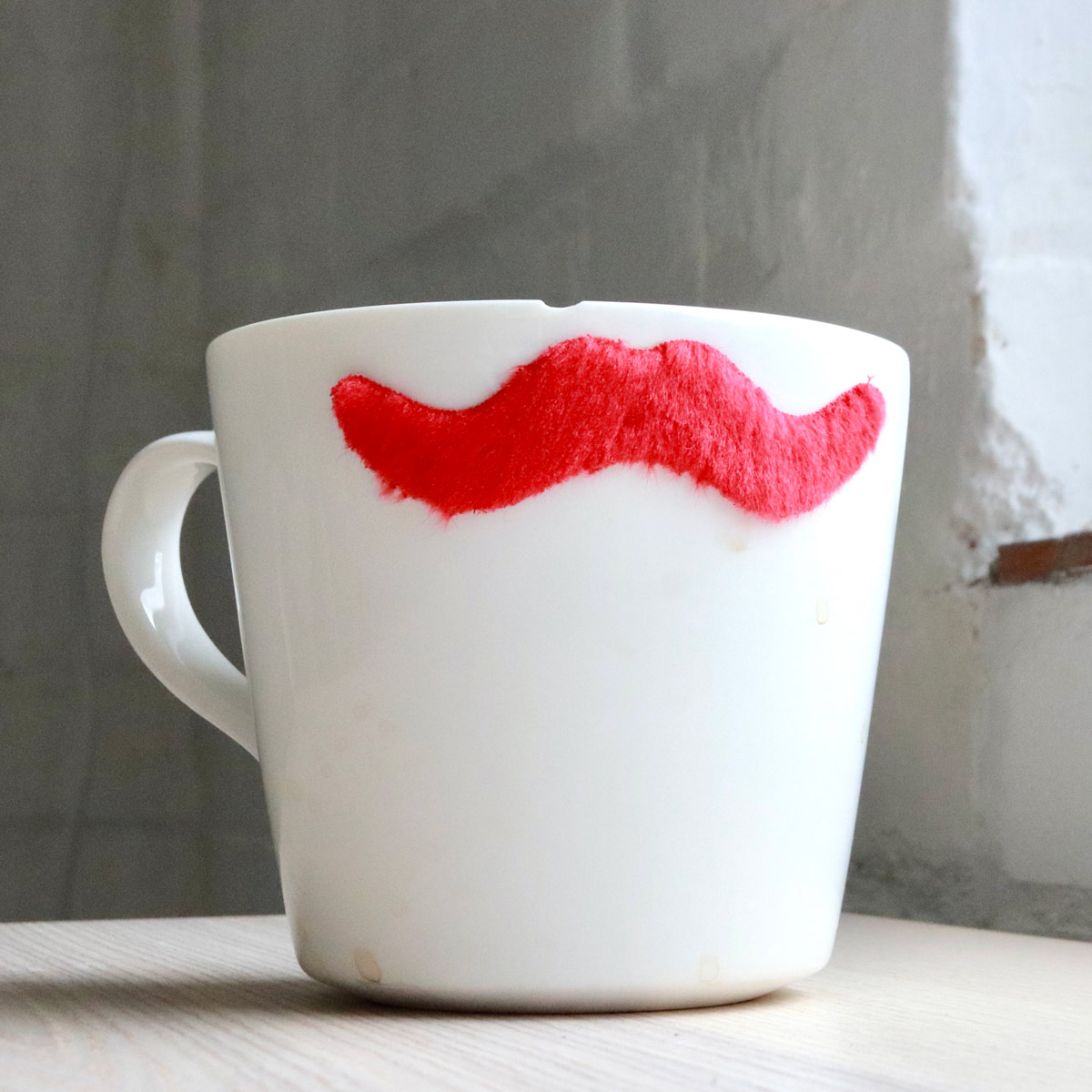
Get a free digital copy of the publication by Sonia Boué on the practice of playfully unmasking through photography and collage
Find out more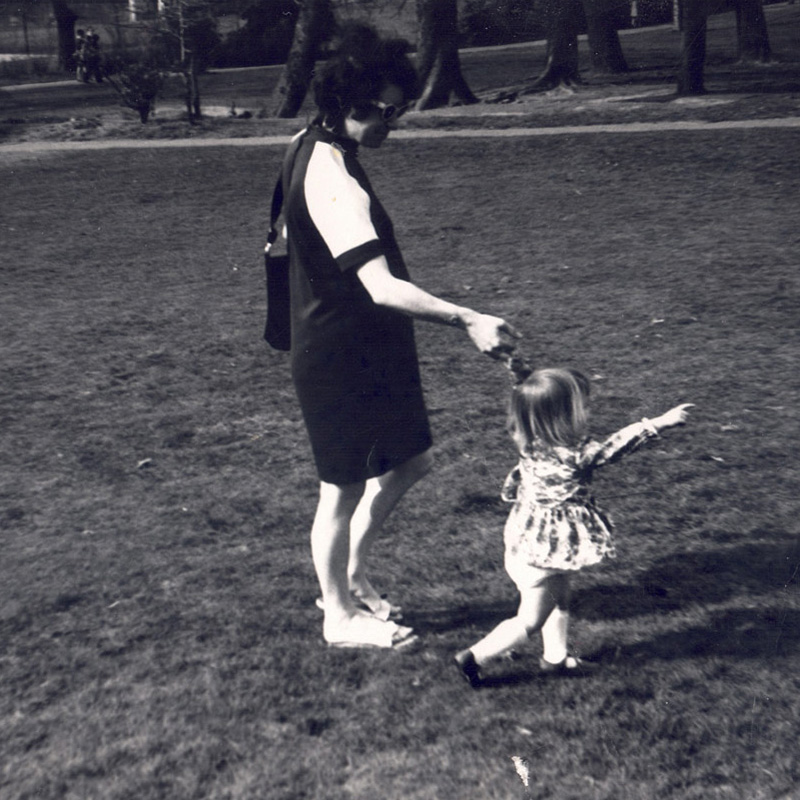
Joanne Limburg writes about her experience of working with the neurophototherapy methodology
ReadBanner image: Helen Robson, Photo protection equipment [detail], assemblage, 2023.
Images on page: Courtesy of the artists.
Related content: 1) Sonia Boué, from the series The Artist is Not Present, 2023. 2) Courtesy Joanne Limburg.
Autograph is a space to see things differently. Since 1988, we have championed photography that explores issues of race, identity, representation, human rights and social justice, sharing how photographs reflect lived experiences and shape our understanding of ourselves and others.